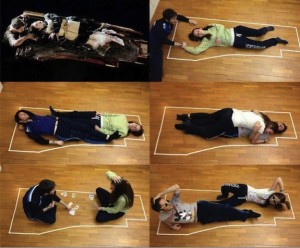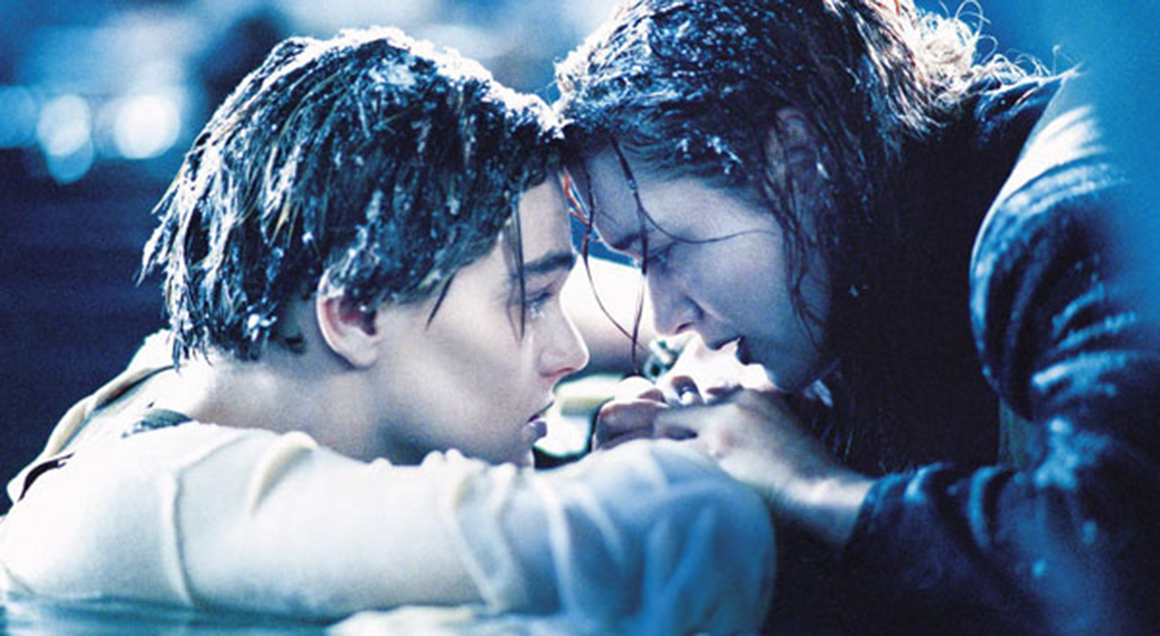Whether it is because people are trying to spoil one of the greatest romantic movies, or they are just trying to convince themselves that Jack (Leonardo DiCaprio) was really supposed to die, the debate about the scene when Rose (Kate Winslet) drops Jack into the sea is still going on. The question everyone is asking is, whether there was enough space on wooden furniture that Rose was laying on for Jack. It has even provoked the famous MythBusters to put that situation to a test.
Their test proved that both Rose and Jack could have survived if they were to tie the life vest under the wooden furniture; this would have given them more buoyancy and kept them safe on the water surface. This is not a debate on what could have happened, but what did happen. While the MythBusters were testing every scientific statement about this scene, they assumed that Jack was already dead when the lifeboat came back. Rather than continue the debate, we can ask, “Was Jack actually dead?” and to give an answer to that, we first need to check two crucial things: what is hypothermia and makes a person float or sink?
Hypothermia and surviving the cold
Hypothermia is a condition in which the body core temperature drops below the minimum level required for normal body function. If a person is exposed to the cold and the body is not able to replenish the heat that is lost, then core temperature gets lower. Hypothermia is often defined as any body temperature below 35.0 °C (95.0 °F). With this method it is divided into degrees of severity based on the core temperature[1]. Core temperature, also called core body temperature, is the operating temperature of an organism, specifically in deep structures of the body such as the liver. Temperature examination in the rectum is the best standard measurement used to estimate core temperature.
| Hypothermia Classification | |||
| Swiss System | Symptoms | Degree | Temperature |
| Stage 1 | Awake and shivering | Mild | 32–35 °C (90–95 °F) |
| Stage 2 | Drowsy and not shivering | Moderate | 28–32 °C (82–90 °F) |
| Stage 3 | Unconscious, not shivering | Severe | 20–28 °C (68–82 °F) |
| Stage 4 | No vital signs | Profound | <20 °C (68 °F) |

When it is not possible to determine an accurate core temperature, as it is in our case, the Swiss staging is preferred. This divides hypothermia based on the presenting symptoms into 4 different stages. At Stage 1 (35-32 °C; 95-92 °F) a person is awake and shivering. As the core temperature lowers, a person enters Stage 2 (32-28 °C; 90-82 °F) to become drowsy and stop shivering. At Stage 3 (28-24 °C; 82-75 °F) person falls unconscious and at the final stage, Stage 4 (bellow 24 °C; 75 °F) death occurs.
One of the lowest documented body temperatures that a person has recovered from is 13.7 °C (56.7 °F). On 20 May 1999, while skiing in the mountains outside of Narvik (Norway), Anna Bågenholm, lost control of her skis and fell through ice on a frozen stream. She had been stuck for 80 minutes when the rescue team freed and transported her to the Tromsø University Hospital.
Stage 3 or Stage 4?

But now we should return to the movie and see what we can conclude. In the scene after Rose climbs on the wooden furniture, we see Rose and Jack shivering; they have entered Stage 1 hypothermia. While we cannot tell exactly how much time had passed and what stage they have entered when the life boat returns to look for survivors, we can look for some telltale clues. We see Rose is conscious and lying down as she looks to the stars and sings. Here Rose has left Stage 1 and entered Stage 2 as she is no longer shivering. But how about Jack? Jack’s eyes are closed. He is also not shivering or moving at all which means he is either unconscious or dead—he is in either Stage 3 or Stage 4. As death is the only symptom of Stage 4, we must look closer for signs of Stage 3.
Following the decrease of temperature, physiological systems continue to falter; heart rate, respiratory rate, and blood pressure all decrease. Difficulty speaking, sluggish thinking and amnesia start to appear. Inability to use hands and stumbling are also usually present. Below 30 °C (86 °F), the exposed skin becomes blue and puffy, muscle coordination is very poor, and walking almost impossible. Pulse and respiration rates decrease significantly[2]. All these are symptoms of Stage 3. So if Jack was unconscious, the only way to test it was to check his pulse. As Rose did not do this, we cannot answer that question based on the stages of hypothermia. We can just watch the scene again and let the sad emotions overflow us. Rose separates their hands, gently pushes Jack into the water while he slowly sinks into the deep, blue ocean… But, wait a minute! He sinks?!
The Physics of Buoyancy
If you have ever tried to relax on the water’s surface then you know that your body floats, without having to move a single muscle. This can be explained by Archimedes’ Principle. An object with lower density than water will float on the surface while one with heavier density sinks. The adult human body consists of about 60% water but its density is close to that of water and the reason why we can both float and sink. This difference in density is due to air in our lungs; the more air in our lungs, the better we float.
People drown when they start to panic, which makes them to breathe water in and exhale air. When certain amount of air leaves and enough water enters the lungs, body becomes denser than water is and a person sinks. The ratio of water and air inside the lungs needed to achieve that density is different for every person and depends on many small factors such as, volume, percentage of body fat, water temperature, salinity, etc. But what if you drop, into water, a body that is already dead, would it sink or float? Scientist and doctors who work on organ transplantation have shown that air remains inside the lungs few hours after death occurs. This allows doctors to transplant lungs and make them active again few hours after the death of owner. That is also how pathologists can tell whether a person was drowned or was dead before hitting the water; if you drop a body post-mortem, it would definitely float.
This means that if Jack was dead when Rose pushed him under water, then he would have immediately floated back to the surface. But if he was unconscious, he would have breathed water into lungs and eventually sink, which is the case. This shows that Jack was in Stage 3, unconscious, and very much alive.
Ending the debate
As Stage 3 symptoms are very similar to death, Rose failed to check properly if Jack was alive when she pushed him under water. Was there anyone else unconscious in the water who could have been saved? We cannot know for certain as every other person in the scene was wearing a life vest. We don’t know if Jack could recover from hypothermia if he had been rescued either. We just cannot tell for sure but we are sure of two things. First, knowledge of science could have saved more lives that terrifying night and second we can conclude this debate once and forever:
Even though it was probably not intention, Rose killed Jack!
Further Reading
[1] Marx, John (2006). Rosen's emergency medicine: concepts and clinical practice.
[2] Brown, DJ; Brugger, H; Boyd, J; Paal, P (Nov 15, 2012). "Accidental hypothermia.". The New England Journal of Medicine.




